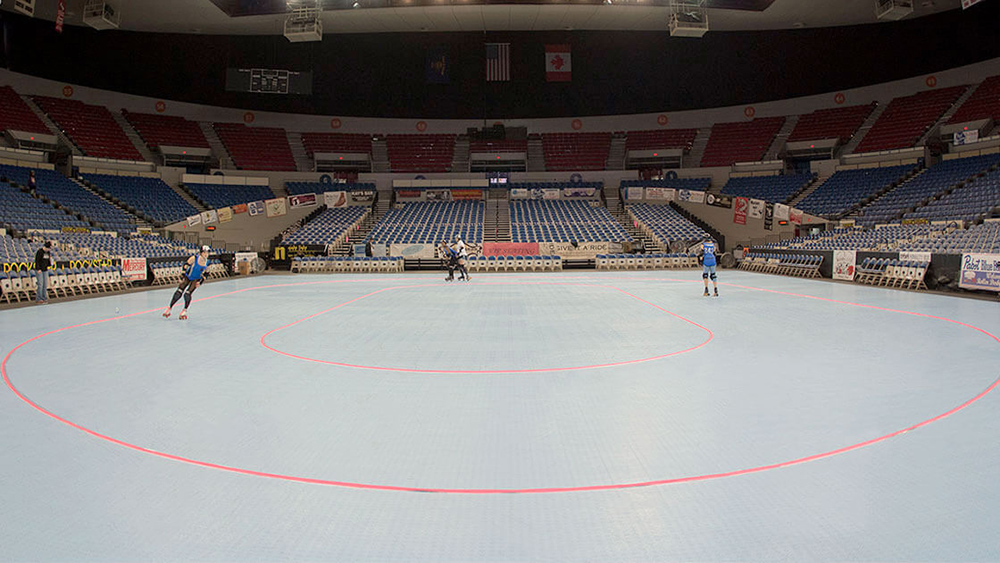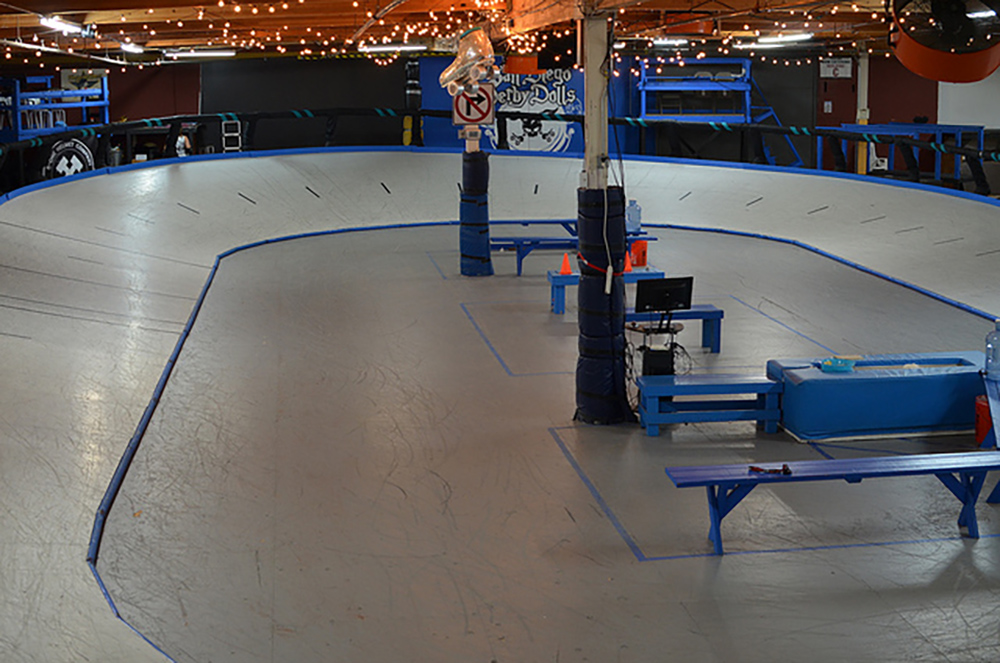Have you ever been curious about the rules of roller derby or maybe you’re new to derby?
Well, stick around because in this article I will be writing about Roller Derby Rules for Dummies (not that you’re a dummy).
Not that interested in Roller Derby Rules for Dummies?
Well check out my other content on roller derby:
- What is Roller Derby?
- 10 Best Roller Derby Skates for Adults
- Texas Roller Derby All-Star Milla Juke-a-bitch – 012 (podcast)
- Rollergirls: The Story of Flat Track Derby – 007 (podcast)
Basics of Roller Derby
Roller derby is a super fun sport but you need to learn the basics first before you decide to watch the game or even be apart of it.
The objective of roller derby is to score more points than the other team, the jammer the one that has to be fast enough to lap the other team helps to score points for there team.
Both teams consist of fourteen players, four are blockers which help to play offense and defense they can also be a jammer, and of the four blockers, one is a pivot which is the leader of the pack and helps to make sure the other team’s jammer doesn’t past their team.
This game is also a full-contact sport so keep that in mind. Most teams skate on quad skates but there are some insists where people on inlines or blades can play.
Safety Equipment
All players have to wear mouth guards, helmets, elbow pads, kneepads, and wrist guards.
Basic Rules of Roller Derby
As I’ve previously stated the team is made up of fourteen teammates but typically only five are on the track at a time.
This game has one jammer and four blockers to help the jammer lap the other team. Also one of the blockers is the pivot as stated previously.
This game matches usually lasts thirty minutes and there are two jam periods and the jams within these games lasts two minutes each.
The game is played on a round track these tracks can be flat or banked (raised) these basic rules apply to both types of tracks so don’t worry.
The start of each jam starts the same the blockers from each team skate in one pack around the track.
After the pack passes the starting line and the last member is at least thirty feet from it the jammers skate after the whistle is blown.
Each jammer from each team must skate as fast as they can so they can get through the pack after they do that they are ready to score a point.
The jammers can then lap the other team’s pack to gain a point for their team.
Blockers can physically block the other team’s jammer so they don’t lap their pack.
The blockers may not do any of the penalties below:
- Tripping
- Blocking above the shoulder, blocking a player when out of bounds, and blocking with the arm below the elbow
- Charging from the rear
At the end of each of the two games, the team with the highest points is the winner if the two teams are tied they will have to go into overtime to break that tie.
Flat Track Rules

Flat track rules are pretty much the same as the rules above except the game is played a little differently according to the WFTDA, which helps run most roller derby teams in the world pretty cool right.
Instead of playing in two minutes, they play in thirty seconds intervals.
Below are the body parts that you may not use while playing roller derby, this rule was made by the WFTDA:
- Heads
- Elbows
- Forearms
- Hands
- Knees
- Lower legs
- Feet
Skaters may also not make contact with the other skaters:
- Heads
- Backs
- Knees
- Lower legs
- Feet
Each penalty that a skater makes earns them thirty seconds in the penalty box of each jam.
Banked Track Rules

The same thing has flat track just played differently, banked tracks are slightly off the ground and typically have a space in the middle that skaters go to sit before the game or where they go to sit for a penalty.
According to Southside Roller Derby, these game periods are played in four parts instead of two and are fifteen minutes each instead of thirty minutes, and the jams are sixty seconds instead of two minutes.
Here are some more rules that can cause a skater to get a penalty:
- Above the shoulders
- Arms
- Back blocking
- Low blocking
- Stopping
- Directional blocking
- Blocking out of bounds
- Assisting out of bounds
- Failure to reform
- Skating out of play
- Assisting out of play
- Skating out of bounds
- Cutting the track
- Illegal blocks
- Illegal procedures
- Delay of game
- Unsporting conduct insubordination
- Fighting
Wrap up
Well, how did you like my article on Roller Derby Rules for Dummies? Did you learn anything new? Be sure to check out my articles on the best roller derby skates and best roller derby wheels on the market today.
I sure hope you did, if you have any questions please leave them down below and I will be sure to get back to you soon.
Want to Learn More About Skating?
Want more reviews on roller skates? Check out my Best Roller Skates page for a list of all of the quad roller skates I recommend. I also have pages for roller skates for men, roller skates for women and roller skates for kids where I recommend the best skates on the market today. Or, check out my roller skates for beginners if you are completely new to roller skating.
Or, if rollerblades or inline skates are more your style, then check out my rollerblades for men, rollerblades for women or rollerblades for kids pages. Or, if you are completely new, check out my rollerblades for beginners page.
